News
View the latest inspiring and positive news and information about what's going on in the PM and IT world.
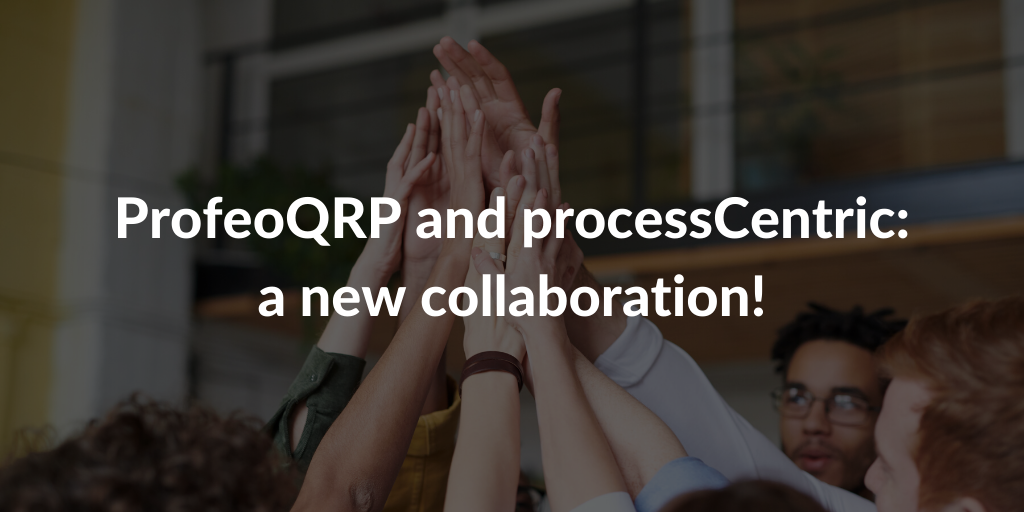
In order to strengthen its presence in the project management training field, ProfeoQRP has decided to start a collaboration with ProcessCentric processCentric is an established training and consulting company for Swiss professionals. This partnership will contribute to enhancing our training portfolio with products such as HERMES 5.
processCentric GmbH
processCentric GmbH was founded in 2015 by Serge Schiltz. As an expert in process and project management in various areas, Schiltz was able to gain extensive experience in business process design and the implementation of change projects.
The mission is to offer companies a holistic vision for business processes and projects, the central focus of business activity. The processCentric services are divided into:
- Consulting services for the implementation of effective governance with a process-oriented approach.
- Training in the area of process management, management of change projects and process-oriented business management.
- Active support in the establishment of strategic process management, process-oriented business management and the implementation of change projects.
ProfeoQRP: We provide Expertise
We provide a complete solution to achieve your training target outcomes and implement Best Practices tailored to your organisation. We adapt each session to the business context with concrete examples, visual supports and games.
Since 2000, QRP International has specialised in supporting organisations and professionals to develop their skills and successfully implement Best Practices through its tailor-made training, certification and consulting services in Best Practice Management Methods.
Education, certifications, consultancy, international business experience, outstanding training skills, customer support, responsiveness and flexibility. QRP is the solution you are looking for.
Our figures:
- +25 QRP organises public training courses in more than 25 European cities
- +20 years of experience in training and consultancy
- +20.000 professionals trained
- 6 Training languages
- 9,17: QRP trainers received average feedback of 9,17 out of 10
The quality of our courses and our instructors guarantees the achievement of the certification to 95% of the delegates. But our trainers' philosophy is not just to make you get the certification, but to show you the method with practical examples so that you can use your new skills once you get back to your desk.
In Switzerland, we are present with regular courses in German, French and as well in English. If you want to know more about ProfeoQRP or our portfolio of services where we are strong in, contact us right now!
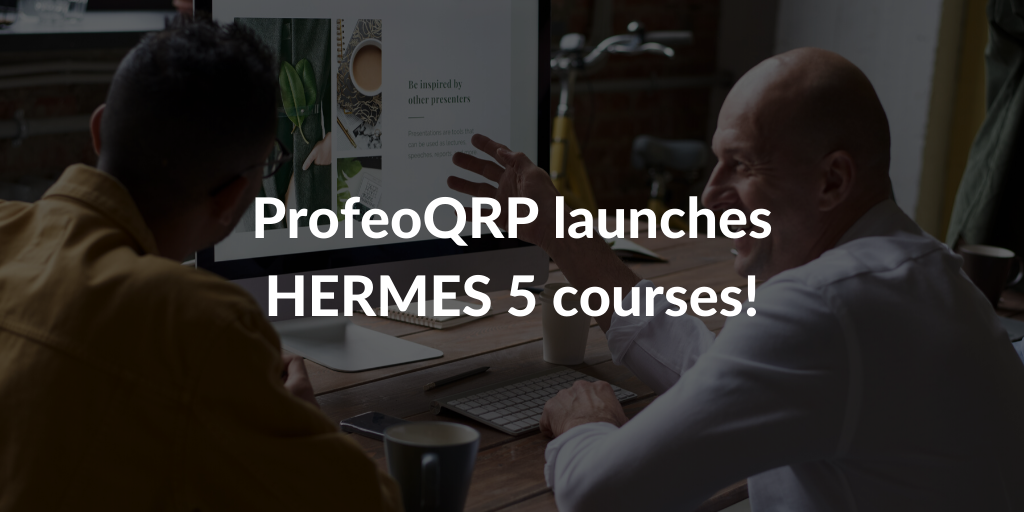
ProfeoQRP is proud to announce the launch of new PM courses: HERMES 5, the most known Project Management methodology.
HERMES 5 is one of the most widely used project management methods in Switzerland in the field of information technology, the development of services and products and the adaptation of business organization.
HERMES 5 - Background
HERMES is a set of instruments which, through consistent use, can contribute to the successful completion of a project.
HERMES was developed by the Swiss Federal Administration. It is an open standard and is recognized as standard eCH-0054 by the eCH association. Many cantons, cities, educational institutions and private sector companies have successfully implemented HERMES.
As a project management method, it has been in use in the Swiss Federal Administration since 1975. After a major revision in 1986, HERMES became binding for all IT projects of the Confederation. It has been further developed over the years and underwent revisions in 1995, 2003 and 2005. HERMES 5, the last version available, was launched in 2012.
HERMES supports the control, management and execution of projects of different characteristics and complexity. It has a clear, easy to understand method structure, is modular and expandable.
What makes HERMES unique?
The latest version of the proven HERMES was developed by numerous practitioners and methodologists.
In this exciting task, the project team counted on support at all levels:
- A group of experts from the Confederation, the cantons and the municipalities, Research institutes, educational institutions, public law and private companies accompanied the project from the collection of requirements to the review of the content.
- All users were invited to public workshops, to discuss and question the results.
- The project committee, which consists of several federal departments and a professor of computer science at the University of Bern, managed the project and made clear decisions.
Throughout the project, there were intensive and often controversial discussions. The objectives were to update HERMES and at the same time simplify its application in the project.
Choose ProfeoQRP for your HERMES 5 training
ProfeoQRP is always ready to support professionals and organizations in their work. For this reason, we are happy to announce the launch of the new HERMES 5 Foundation, HERMES 5 Advanced and HERMES 5 Online courses.
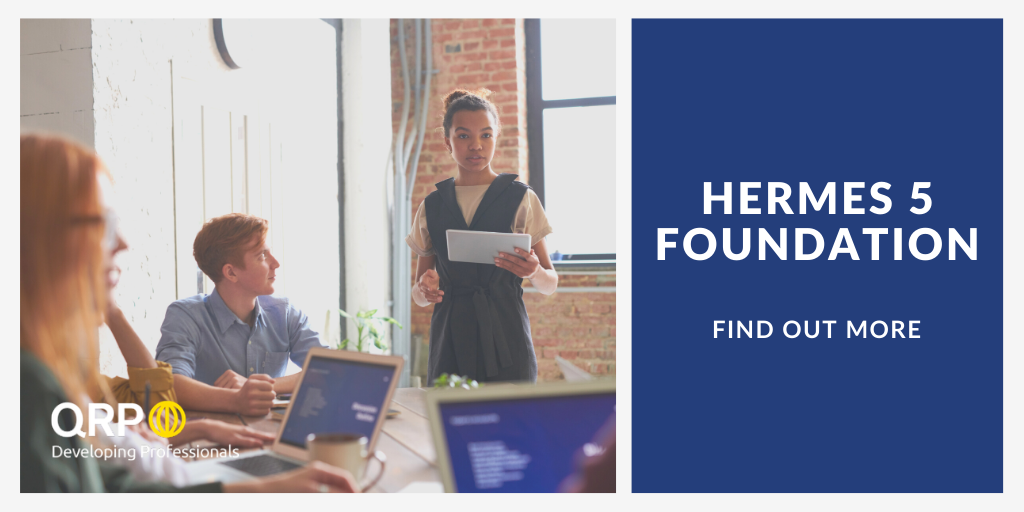
The HERMES 5 Foundation course can be the starting point for an organization that intends to implement the HERMES 5 methodology, as it provides participants with the basic principles, workflows and information for rapid adoption of the methodology.
HERMES 5 can give your organization a competitive advantage. Want to know more? Contact us.
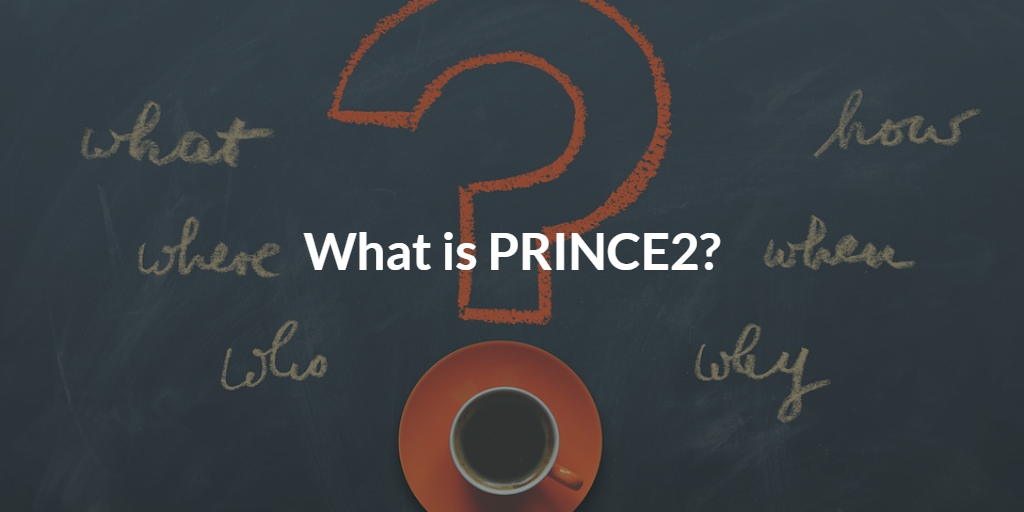
PRINCE2®, an acronym for PRojects IN Controlled Environments, is a project management methodology.
Published in 1996, it’s now used in over 150 countries in both the public and private sectors, establishing itself as the world’s most practised project management method.
The owner of the method is Axelos, a joint venture company co-owned by the UK Government’s Cabinet Office and Capita plc.
PRINCE2 can guide professionals and organizations through the essentials for managing successful projects, regardless of type or scale. It provides a framework that focuses on organization and control throughout the entire project: PRINCE2 divides projects into manageable stages to encourage efficient control of resources and regular progress monitoring.
PRINCE2 is “product-based”, meaning the project plans are focused on delivering results, and not simply planning when activities will be undertaken; processes cover all the activities that compose a project, from start to finish. Every project starts with a project plan, each stage of the project is clearly structured. It provides a common language across a project and provides breakpoints within a contractual framework.
What are the benefits of using PRINCE2
PRINCE2 is a generic best practice method which is flexible enough to be tailored to the specific needs of different organizations for all projects, including Agile delivery. The main benefits of the method are:
- an organised and controlled start, making sure there is a valid reason for the project and that all people and resources have been organized and are ready for the project
- an organised and controlled middle, once the project has been organized and has started, making sure its validity is maintained and the work carried out is controlled throughout the project life
- an organised and controlled end. A controlled end is always better than the natural tendency to drift into the operational life of a project’s product, hence we need to make sure the project deliverable is accepted by our client before officially closing the project
- regular reviews of progress against plan and against the Business Case
- flexible decision points
- controlled management of deviations from the project plans thanks to the Management by Exception principle
- the involvement of management and stakeholders at the right time and place during the project
- good communication amongst the project management team, the stakeholders, and the rest of the organization
Key elements of PRINCE2
The key elements of the methodology are principles, processes, themes and project environment.
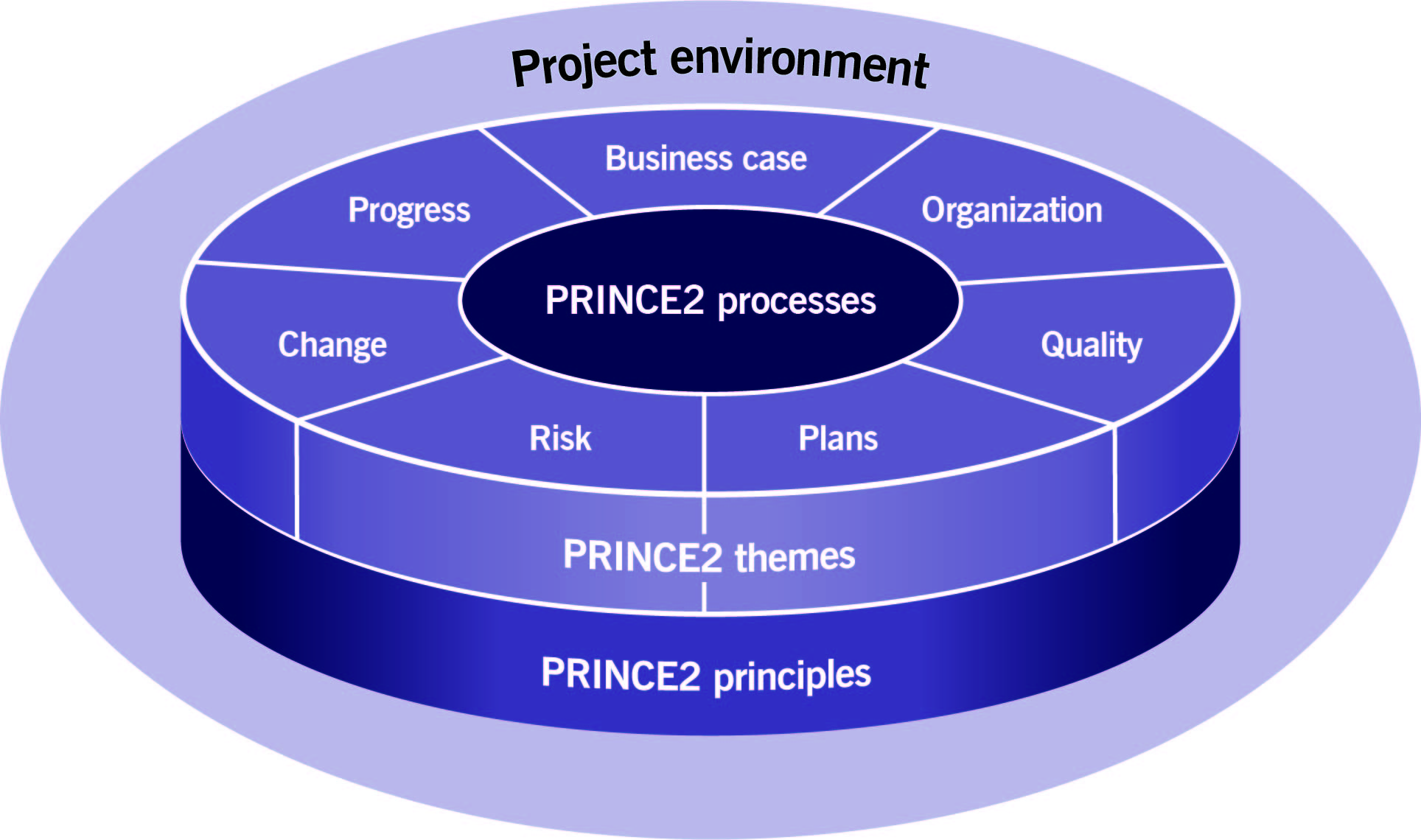
The 7 principles
Principles are the guiding obligations and good practices which determine whether the project is being managed using PRINCE2. Unless all of them are applied, it is not a PRINCE2 project; the seven PRINCE2 principles are:
- Continued business justification There must be a justifiable reason to be running and managing the project. If not, the project should be closed.
- Learn from experience PRINCE2 project teams should continually seek and draw on lessons learned from previous work.
- Defined roles and responsibilities The PRINCE2 project team should have a clear organizational structure and involve the right people in the right tasks.
- Manage by stages PRINCE2 projects should be planned, monitored and controlled on a stage-by-stage basis.
- Manage by exception People working within the project should be given the right amount of authority to effectively work within the environment.
- Focus on products PRINCE2 projects focus on the product definition, delivery and quality requirements.
- Tailor to suit the project environment PRINCE2 must be tailored to suit the project’s environment, size, complexity, importance, capability and risk.
The 7 processes
The processes describe a progression from the pre-project activity of getting started, through the stages of the project lifecycle, to the final act of project closure. Each process has a checklist of recommended activities, products and related responsibilities. The processes are:
- Starting up a project The main purpose of this process is to ensure that the prerequisites for initiating a project are in place by answering the question: “Do we have a worthwhile and viable project?”.
- Directing a project The purpose of this process is to enable the project board to be accountable for the project’s success,
- Initiating a project The purpose of this process is to establish solid foundations (documented in the PID) for the project so the organization can understand the work that needs to be done to deliver the project product.
- Controlling a stage The purpose of this process is to assign work to be done, monitor the work, deal with issues, report progress to the project board, and take corrective action to ensure that the stage remains within tolerance.
- Managing product delivery The purpose of this process is to control the link between the project manager and the team manager, by agreeing on the requirements for acceptance, execution, and delivery.
- Managing stage boundaries In this process, the project manager provides the project board with an overview of the performance of the current stage, updates the project plan, and business case and creates a stage plan for the next stage. The project board reviews these documents and decides to approve the next stage.
- Closing a project The purpose of this process is to provide a fixed point at which acceptance of the project product is confirmed and to recognize that objectives set out in the original PID have been achieved, or that project has something more to contribute.
The 7 themes
The themes describe aspects of project management that must be addressed continually and in parallel throughout the project. They explain the specific treatment required by PRINCE2 for various project management disciplines and why they are necessary.
- Business case Create and maintain a record of the business justification for the project.
- Organization Define the individual roles and responsibilities of the whole project team.
- Quality What the quality requirements and measures are and how the project will deliver them.
- Plans The steps required to develop the plans and the PRINCE2 techniques that should be used.
- Risk Effectively identify risks and opportunities that could impact the project.
- Change How the project manager will assess and act on changes to the project.
- Progress The ongoing viability and performance of the plans and how and whether the project should proceed.
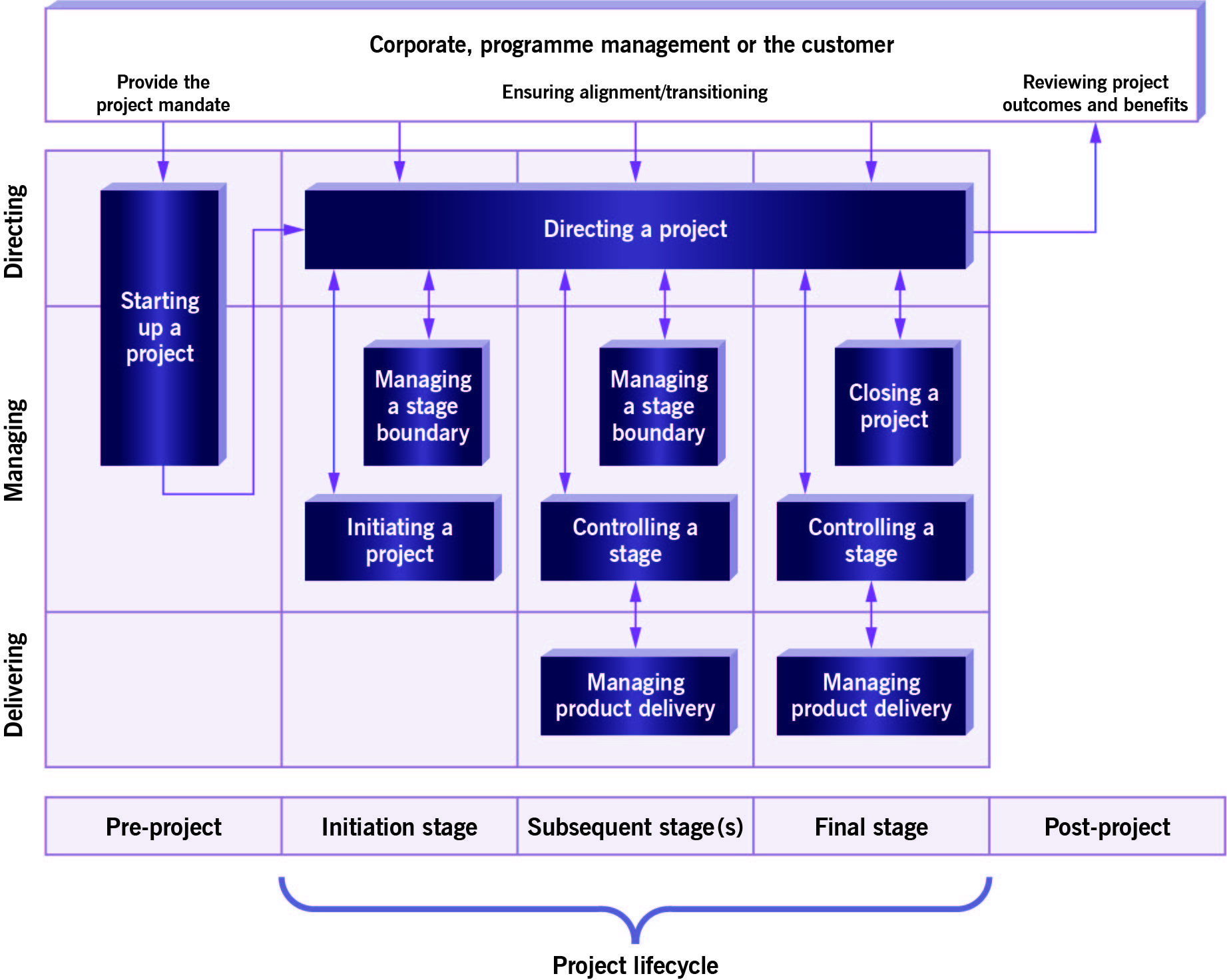
Project environment: organizations often want a consistent approach to managing projects and tailor PRINCE2 to create their own project management method. This method is then embedded into the organization’s way of working.
The last version of the Method, launched in 2017, places a new emphasis on the flexibility of the method and how to tailor it to specific projects.
PRINCE2 is comprised of:
- A certification scheme
- The PRINCE2 manual - Managing Successful Projects with PRINCE2 2017 Edition
PRINCE2 Certification Scheme
The PRINCE2 certification scheme has two main levels:
- Foundation: this level introduces the PRINCE2 method. The PRINCE2 Foundation exam aims to confirm that you know and understand the PRINCE2 method well enough to be able to work effectively with, or as a member of, a project management team working within an environment supporting PRINCE2.
- Practitioner: the purpose of the PRINCE2 Practitioner exam is to confirm whether you have sufficient understanding of how to apply and tailor the method in a range of different project environments and scenarios.
PRINCE2 or other methodologies?
Your choice of a Project Management methodology defines how you work and communicate with your team. Project management has more than one certification, and it can be difficult to choose the right one for you and your organization.
Other project management qualifications that are acknowledged worldwide include:
- Project Management Professional (PMP) certification from PMI (Project Management Institute)
- IPMA (International Project Management Association) also has detailed bodies of knowledge that explain the wider skills needed for a project manager
- AgilePM from APMG, a method focused on the management of Agile projects.
How to get PRINCE2 certified?
In order to obtain your PRINCE2 Certification, you need to take a classroom or online training with an AXELOS' Accredited Training Organizations (ATOs).
QRP International is an official ATO for PRINCE2, accredited by Peoplecert on behalf of Axelos. We’re authorised to deliver PRINCE2 Foundation and PRINCE2 Practitioner classroom courses and PRINCE2 Online training.
Would you like support in order to figure out the best solution for you and your team? We would be happy to provide more info on the different PM methods available - contact us!
Source: Axelos, Key Benefits of PRINCE2®

As an expert in process and project management in various sectors, Serge has extensive experience in Design of business processes and the implementation of change projects.
His focus has always been on the benefits-oriented implementation of concepts that support effective business management.
1. What is HERMES? And why was this method developed for?
HERMES is a project management method reduced to the essentials and directly applicable. It was developed in the Federal Administration to ensure minimal but effective governance structures in projects.
2. What about HERMES 5?
The current version HERMES 5 is pleasingly straightforward and also modular. It does not claim to make specifications regarding the HOW of project management but is limited to the WHAT. However, the method focuses on making work easier for project participants by providing role, task and result descriptions as well as document templates, and on the other hand, it increases the chances of success of projects by promoting strong governance.
3. Hermes Foundation and Advanced. To whom are these levels addressed and why?
The HERMES Advanced certification is aimed at project managers, HERMES Foundation at all other project staff.
The goal of a HERMES Foundation training (and certification) is to get to know the elements of the method and their interaction. A project team member should get a solid understanding of his role and the other roles involved.The HERMES Advanced certification is about deepening this knowledge so that the method can be applied in a beneficial way. This includes, in particular, the ability to assess how HERMES can be optimally adapted in a concrete project situation.
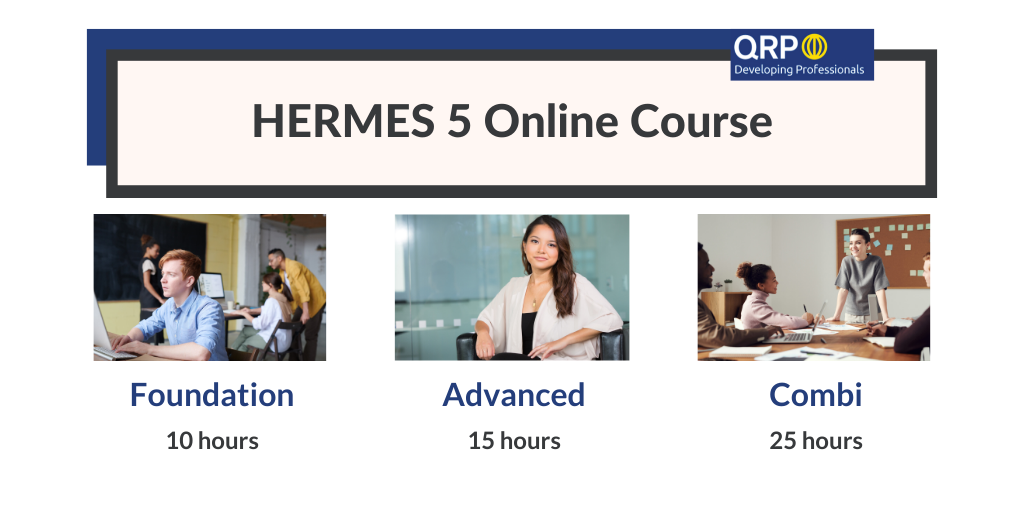
4. How does HERMES position itself on the Project Management market, taking into account other methods such as PRINCE2 and Agile PM?
HERMES is a very concrete, directly applicable method. However, as already mentioned, it deals exclusively with WHAT and not with HOW of project management. A HERMES training course is therefore not suitable for learning and developing general project management skills.
Instead, other project management methods and frameworks are less directly applicable, but they are much more complete and the training courses offered for them prepare more comprehensively for a project management task. I, therefore, recommend HERMES training and certification as a supplement to a PMI, IPMA or PRINCE2.
Methodologically, I see a certain "kinship" between HERMES and PRINCE2 and see a particular benefit in this combination. Agile PM or also PMI-ACP are further very useful training possibilities in the environment of agile software development.
5. What is the biggest problem/change you currently see in the project management community?
The classic and very justified claim to governance in projects is in at least apparent contradiction to the principles of agile project implementation, which is increasingly proving its worth, especially in software projects. It is necessary to combine both.
From my point of view, it is a problem that many actors do not understand the meaning and goal of governance requirements and implement these requirements with much unnecessary effort in a purely "administrative" way. At the same time, a lack of understanding of the agile approach is often misused as an "excuse" for hopeless project chaos.
I have noticed a great need for training in the area of a meaningful application of methods in many projects.
6. What are three things project managers should learn in the near future?
- Agile project approach
- Effective project controlling
- Negotiation techniques
This last point may seem surprising, but a project manager must be able to negotiate with stakeholders what his team can offer to create the maximum possible benefit. It is fatal if it simply accepts all requests and cannot deliver later.
 Serge Schiltz completed his studies in mathematics and computer science with a doctorate in computer science. While working, he continued his education in business administration (MBA in Business Administration), project management, process management and service management (ITIL v4 Foundation).
processCentric GmbH was founded in 2015 by Serge.
Serge Schiltz completed his studies in mathematics and computer science with a doctorate in computer science. While working, he continued his education in business administration (MBA in Business Administration), project management, process management and service management (ITIL v4 Foundation).
processCentric GmbH was founded in 2015 by Serge.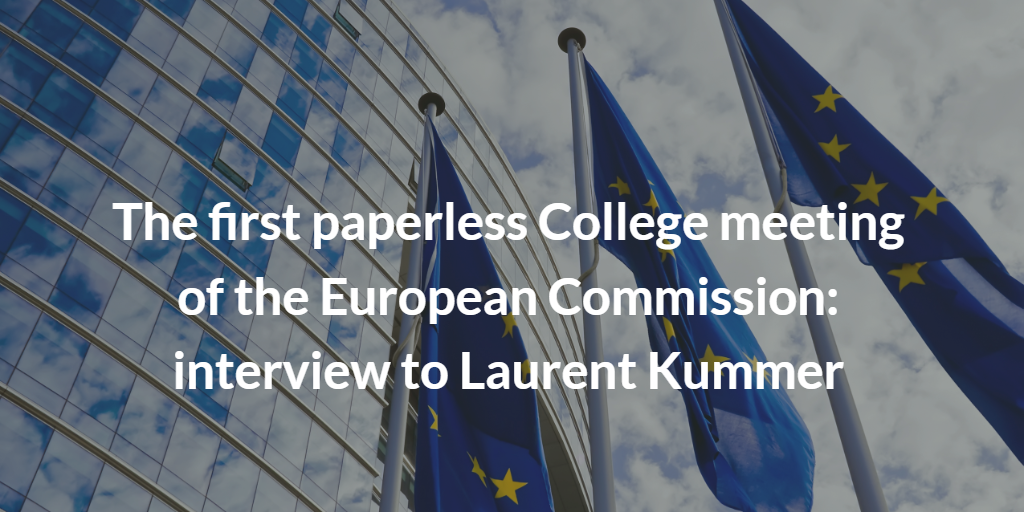
Laurent Kummer is a Senior Project Management Consultant for the European Commission and works on developing and promoting PM², the project management methodology used and sponsored by the European Institutions.
At the end of 2019 he was actively involved as Project Manager in a very challenging project inside the European Commission. We interviewed him to know more about it.
'6 weeks to deliver a paperless solution and break a 60 years old habit'. Can you tell us more about the project?
This project came from a demand from European Commission President Ursula Von der Leyen after her election. She wants to lead by example in showing that the highest decision-making meeting of the EU, the College of Commissioners meeting, can be run paperless, thus avoiding printing over 2 million copies of document every year.
Another requirement came complicating the demand: the president usually asks all participants to her meetings to leave all personal electronic devices outside (smartphones, tablets etc…), both for security reasons and also so that people are focused on the meeting and nothing else. We then had to think of special electronic devices that would be kept in the iconic Jean Monnet meeting room.
What was for you the most challenging part of the project? And what was, in your opinion, the key for the success of the project?
The constraint was essentially the time: we had less than two months to deliver an innovative solution that meet both security criteria (some documents are sensitive) and usability (users are VVIPs with no particular IT skills).
On the pressure side, we were told there was no plan B, it was announced publicly upfront, so there was a clear image/reputation damage risk of not delivering on time…
At this level, and with a new President, competition of egos was also clearly a risk: everybody wants to please the new boss, so roles and responsibilities distribution has to be airtight.
That’s where PM² came into play: with crystal clear governance model and Responsibility matrix, with its communication management template and how it involves project sponsors and management in the project, it was a serious asset in our hands.
Concretely when you jump in such a demanding project you have to focus on first-time right delivery and little else. Soft skills are put to a test: calm; patience and influencing skills are paramount to get what is needed fast.
How did PM² support you?
With the PM² RASCI* table we were able to quickly communicate on who does what. PM² promotes a balanced governance model where the business side plays an important part in the successful delivery, but it also means the business manager must know PM².
It was thankfully the case, as my counterpart in the business was also PM² certified – this definitely simplified the communication: we all knew how to structure and organize the work using PM² artefacts such as the Work Plan and the Charter. It allowed for precise requirements collection and scope guardian, allowing to stay focused on the delivery, with clear visibility of the risks and issues.
*RASCI is a Responsibility Assignment Matrix (RAM), a way of representing and clarifying the roles and responsibilities for a given activity. RASCI stands for: Responsible, Accountable, Supports, Consulted, Informed.
What were the results?
In the end we tried to keep things very simple: known tablets, known software, no innovation on the security layers, but it was the integration that was delicate. The Project Manager is like an orchestra conductor in this case, and must ensure all play their part when they are supposed to.
We delivered on time (with even a couple of weeks to spare) and the President was happy - it was the first item she mentioned in her first press conference as President:
“I want to report from the very first College meeting, which was for the very first time a paperless College meeting, it was completely digital.”

(In the picture above, Laurent Kummer in a paperless Jean Monnet meeting room.)
Source: https://ec.europa.eu/commission/presscorner/detail/en/speech_19_6660
Laurent Kummer
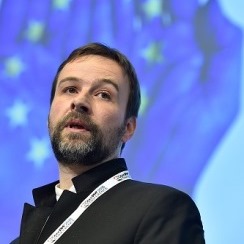
Laurent has been managing projects and programmes for over 20 years, as an engineer in the industry for General Electric and then for the public sector. He works now on developing and promoting PM², the project management methodology used and sponsored by the European Institutions and contributes to the development of the ISO 21500 project management standard. He is a Lean Six Sigma expert, PMP and of course PM² certified.
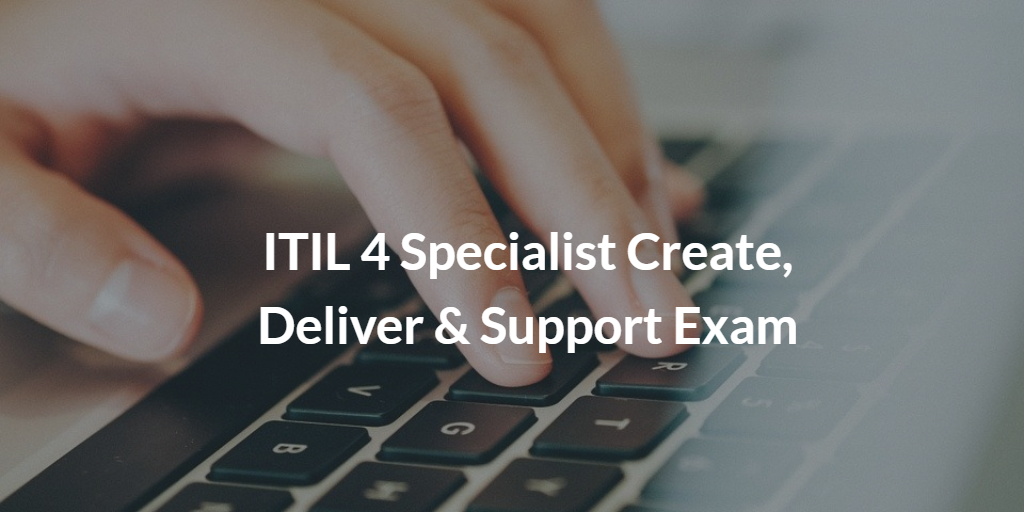
The purpose of the ITIL 4 Create, Deliver and Support Qualification is to provide the candidate with an understanding of how to integrate different value streams and activities, of service performance, service quality and improvement methods.
Thanks to this understanding, the candidate will be able to create, deliver and support IT-enabled products and services, and relevant practices, methods and tools.
To take the exam, the candidate must have passed the ITIL 4 Foundation examination. Also, the candidate must have attended an accredited training course for this module. Work experience in IT services is recommended.
Examination Target
- Individuals continuing their journey in service management.
- ITSM managers and aspiring ITSM managers.
- ITSM practitioners managing the operation of IT-enabled & digital products and services, and those responsible for the end-to-end delivery.
- Existing ITIL qualification holders wishing to develop their knowledge.
Exam Format
- Language: English and French.
- Duration: 90 minutes.
Candidates taking the exam in a language that is not their native or working language may be awarded 25% extra time, i.e. 113 minutes in total.
- Materials permitted: No materials other than the examination materials are permitted. This is a ‘closed book’ examination.
- Questions: 40. All 40 questions are Objective Test Questions (OTQs).
- Pass Mark: 28 marks or above.
- Level of Thinking: Bloom’s levels 1 & 2.
- There are 15 questions at Bloom’s Level 2 = approx. 37.5%.
- There are 25 questions at Bloom’s Level 3 = approx. 62.5%.
- Exam Format: Online or Paper.
- Certificate Format: Online.
- Online certificate is usually included in the exam fee, you could ask for a paper certificate to the Exam institute after your exam.
- Prerequisites: The candidate must have passed the ITIL 4 Foundation examination. In addition, the candidate must have attended an accredited training course for this module (the recommended duration for this training is 18 hours including the examination).
ITIL 4 Create, Deliver & Support (CDS) Exam Sample Questions
All 40 questions are Objective Test Questions (OTQs), which present four options from which one option is selected. Question styles used within this type are: ‘standard’, ‘list’, and, exceptionally, ‘negative’ standard OTQ.
- Example ‘standard’ OTQ:
Which is a source of best practice?
a) Q b) P c) R d) S
- Example ‘list’ OTQ:
Which statement about service asset and configuration management is CORRECT?
1. It does Q 2. It does P 3. It does R 4. It does S
a) 1 and 2 b) 2 and 3 c) 3 and 4 d) 1 and 4
NOTE: Two of the list items are correct. List style questions are never negative.
- Example ‘negative’ standard OTQ:
Which is NOT a defined area of value?
a) Q b) P c) R d) S
NOTE: Negative questions are only used as an exception, where part of the learning outcome is to know that something is not done or should not occur.
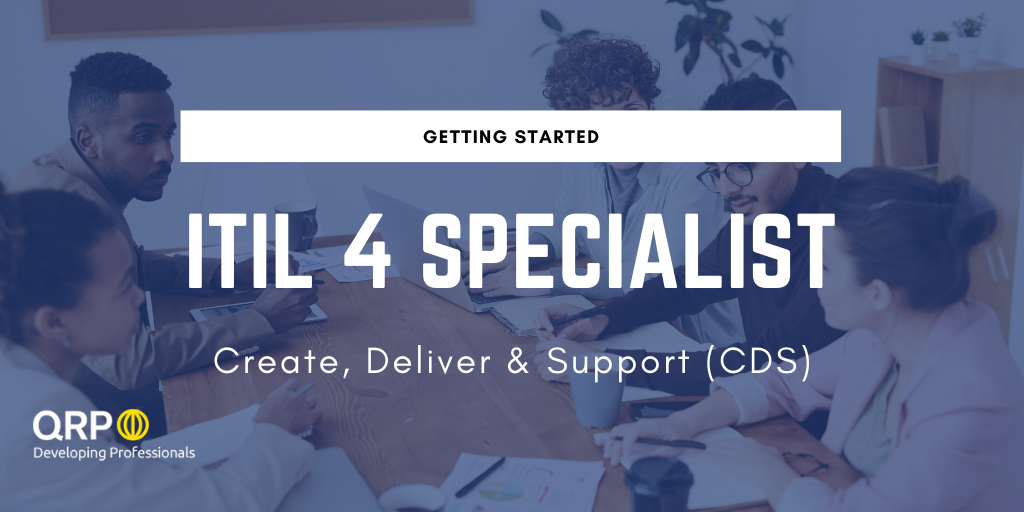
ITIL 4 Create, Deliver & Support (CDS) Objectives
The purpose of the ITIL 4 Create, Deliver and Support Examination is to assess whether the candidate can demonstrate sufficient understanding and application of ITIL 4 to the creation, delivery and support of services, as described in the syllabus below, to be awarded the ITIL 4 Create, Deliver and Support qualification. The ITIL 4 Create, Deliver and Support qualification is one of the pre-requisites for the designation of ITIL 4 Managing Professional.
As a candidate you need to demonstrate the achievement of these learning outcomes:
- Understand how to plan and build a service value stream to create, deliver and support services.
- Know how relevant ITIL practices contribute to creation, delivery and support across the SVS and value streams.
- Know how to create, deliver and support services.
The ITIL 4 Create, Deliver & Support (CDS) Certificate
The candidate, who will pass the exam with positive marks, will obtain the certification. The online certificate is usually included in the exam fee, you could ask for a paper certificate to the Exam institute after your exam.
QRP International is an ITIL Accredited Training Organisation (ATO) by Peoplecert on behalf of Axelos. We are authorised to deliver ITIL 4 MP Create, Deliver & Support (CDS) courses and can prepare you for the examination leading to the ITIL 4 Create, Deliver & Support (CDS) Certificate in IT Service Management.







